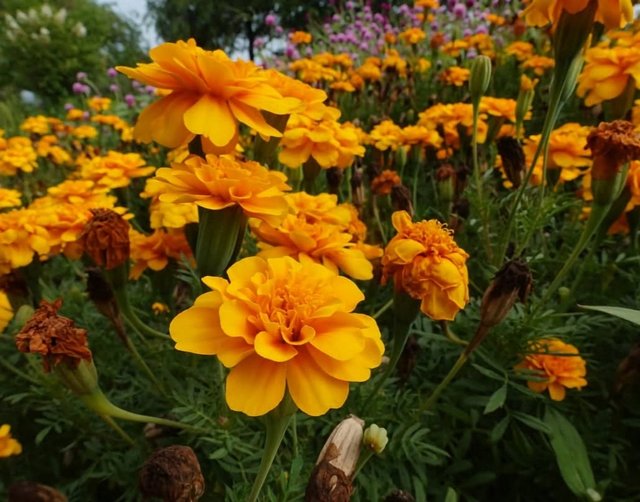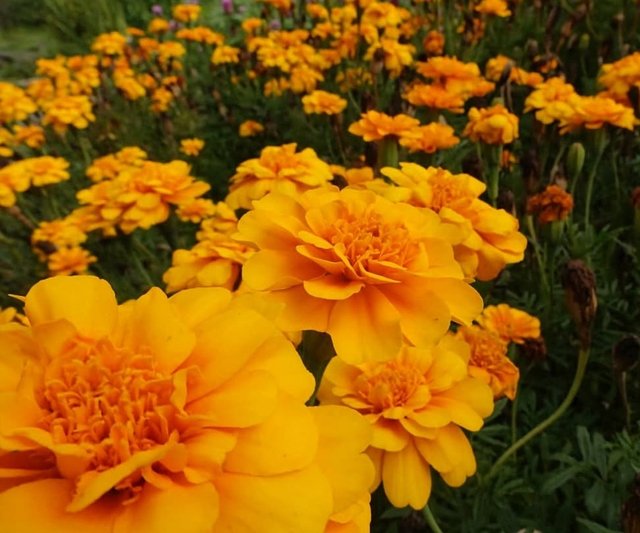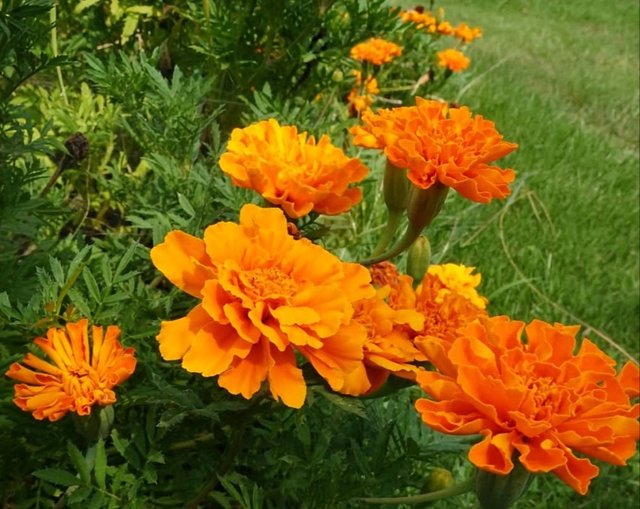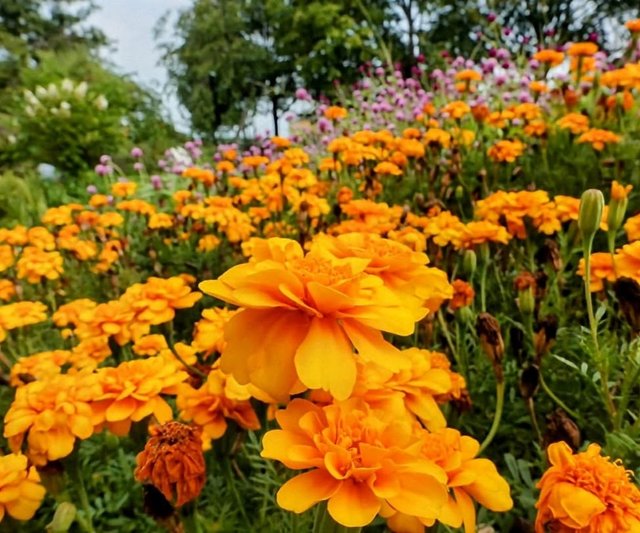Yellow Colour Marigold Flower
Marigold, one of the most cheerful and widely grown flowers in the world, is cherished for its vibrant colors, hardy nature, and cultural significance. Belonging to the genus Tagetes and the family Asteraceae, marigolds are native to the Americas but have found a home in gardens, festivals, and traditions across the globe. Their golden, orange, and yellow blossoms symbolize brightness, warmth, and positivity, making them a favorite choice for ornamental, religious, and medicinal purposes.
Botanical Overview
Marigolds are herbaceous annual or perennial plants, depending on the variety and climate. They typically grow 20 to 90 centimeters tall, with lush green foliage that has a distinctive, sometimes pungent scent. The flowers come in a range of shapes, from small single blooms to large, full double blossoms resembling pom-poms. Popular species include the African marigold, known for its large, round flowers, and the French marigold, admired for its compact size and ruffled petals.
Cultural and Symbolic Importance
Marigolds carry deep cultural and symbolic meaning in many parts of the world. In India, marigolds are considered sacred and are used extensively in religious rituals, weddings, and festivals such as Diwali and Durga Puja. Their golden color is associated with the sun, purity, and the cycle of life. In Mexico, marigolds hold special significance during Día de los Muertos (Day of the Dead), where they are believed to guide the souls of departed loved ones back to the world of the living. Known as cempasúchil in Spanish, these flowers are often arranged on altars and graves.
Garden and Ornamental Uses
Marigolds are beloved by gardeners for their resilience and versatility. They thrive in sunny locations and can withstand various soil types, making them easy to grow even for beginners. Their vibrant blooms add instant color to flower beds, borders, containers, and balconies. Beyond their beauty, marigolds are excellent companion plants. They naturally repel pests such as nematodes, aphids, and whiteflies, which makes them valuable allies in vegetable gardens. Farmers and gardeners often plant marigolds alongside tomatoes, peppers, and beans to protect crops naturally.
Medicinal and Practical Value
Historically, marigolds have been valued for their medicinal properties. Extracts from the petals and leaves contain compounds with anti-inflammatory, antiseptic, and antifungal effects. Marigold oil and creams are commonly used to soothe skin irritations, burns, wounds, and insect bites. Herbal teas made from marigold flowers are believed to support digestion and boost immunity. Additionally, marigolds are used as a natural source of yellow dye and as an ingredient in cosmetics. Their petals are sometimes added to poultry feed to enhance the color of egg yolks and chicken skin.




%20(7).jpeg)
TEAM 8
Congratulations! Your post has been upvoted through @steemcurator08. Good post here should be..